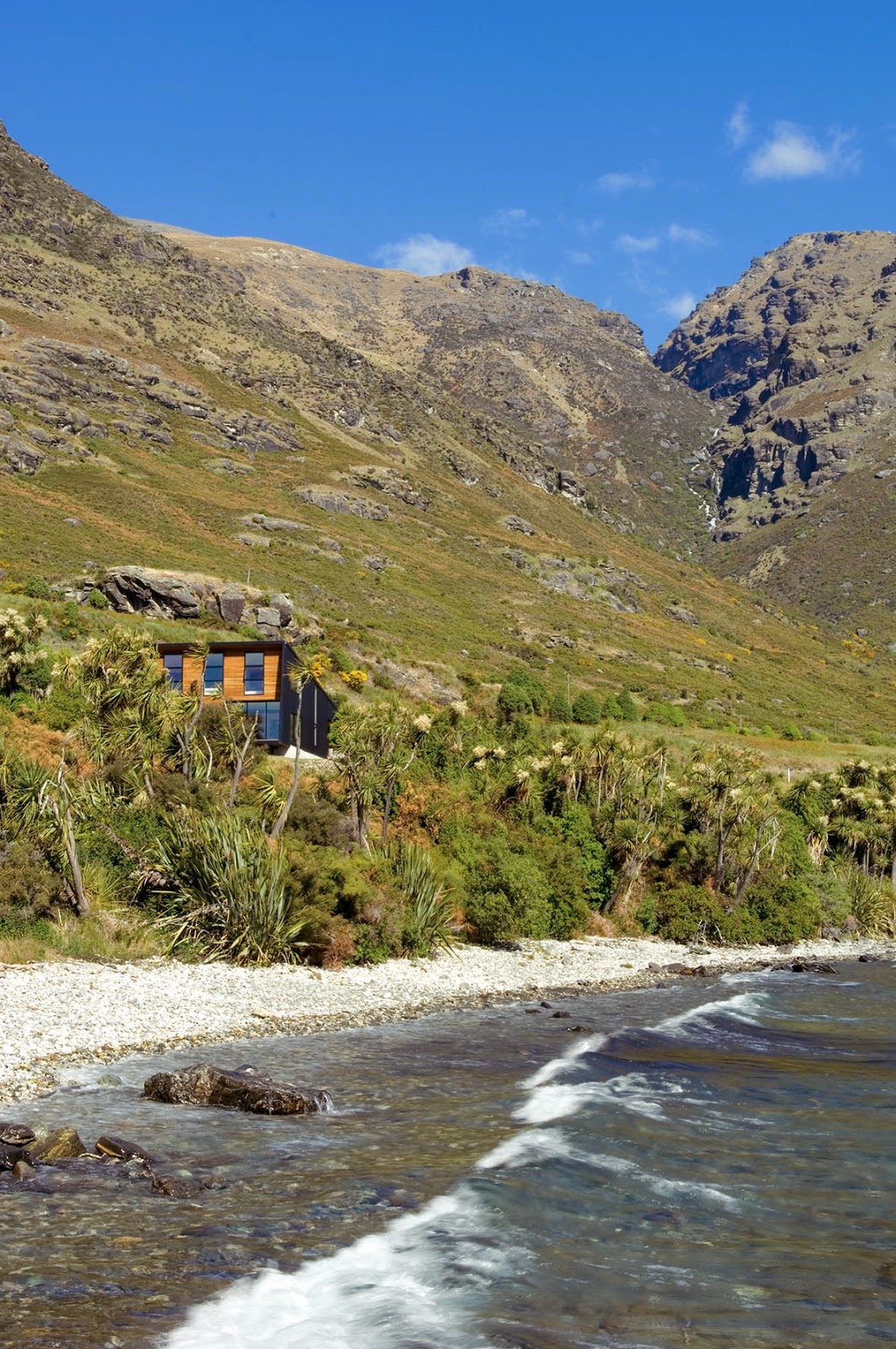Happy New Year everyone, and welcome to the first in our new series of Design Case Studies, which will run weekly here on our blog.
The Design Case Studies are created to give you insight into the building process of some of the amazing homes in the magazine, so the owners can share some of the lessons they learned with you. The series is brought to you in association with Atherm Window Systems.
The first Design Case Study visits Pete Ritchie and Bronwen Kerr of Queenstown's Kerr Ritchie Architects and talks to them about how they allowed themselves maximum flexibility and minimum fuss with the construction of their home at Drift Bay on Lake Wakatipu. The photographs are by Paul McCredie.
 |
| Pete Ritchie and Bronwen Kerr of Kerr Ritchie Architects. |
 |
| A view of the home with The Remarkables rising behind. |
The couple started out with the intention of designing a “lean” house containing enough room for them and their three children, as well as a studio to allow them to run their architecture practise from home. Initially, they hoped to complete the house for somewhere around $2000 a square metre, a target they’d achieved on a home they had previously designed for themselves in Wellington.
 |
| The home's main living area looks north across Lake Wakatipu towards Queenstown. |
Some decisions they made along the way helped keep costs down, but these choices were always made with the overall aesthetic of the building in mind. Inside, they made the economical choice of strandboard panels for doors, joinery and some walls, instead of the more expensive hoop pine they were initially considering. Now that the strandboard is installed, it feels perfectly in keeping with the home’s casual aesthetic.
 |
| The kitchen looks out to the courtyard. The staircase at left is clad in Strandboard panels, which helped keep costs down and fit the home's casual aesthetic. |
 |
| The home's living area features cedar detailing that is also used on the exterior. |
 |
| One of the home's bathrooms features a sauna and a sliding door that opens to the garden. The walls feature 'Vixel' glass mosaic tiles. |
 |
| A view through the house from the entry to the studio. |
Q+A
Bronwen Kerr & Pete Ritchie
Bronwen Kerr & Pete Ritchie
HOME Why did you decide on a labour and materials arrangement (in which a builder is effectively paid by the hour and for the materials used) with your builder instead of a fixed-price contract?
Pete Ritchie: We had a good friend who was the builder, and because we know the industry we could source some materials ourselves. We were our own project managers, and to work like that you need a builder who you trust. A labour and materials arrangement is a pretty open and honest kind of system. We didn’t want to pay a huge premium for a fixed price, and nor did we want the builder to make a loss on the job. So it seemed like an appropriate way for us to work. Architects do have experience and expertise that not everyone else has. This gives them more confidence to work this way.
HOME You worked as the builder’s labourer. Is that an experience you’d like to repeat?
Pete Ritchie: On the whole I enjoyed it – I also painted the house myself and stained all the weatherboards. That saved quite a bit of money. But in the middle of winter weeks can go by without you seeming to make much progress, and it’s a bit grim and very cold and you have smoko around a campfire.
HOME Was the process of building your own place helpful in knowing about budgets?
Pete Ritchie: It gives you a good idea of where clients are coming from. We naturally tend to be conservative with budgets, and we don’t try to extend clients. The process gave us a really good foundation of understanding where costs lie and how to work within a budget.
HOME When you learned the house would cost more than you originally intended, did you think about revising the plan, and reducing the home's size?
Pete Ritchie: We didn't really feel we had any option but to carry on as we had originally planned. We had certain needs and requirements which included the studio we work from. It's not a particularly fat house, so there wasn't much to trim off. We weren't in the mindset of creating a house that was oversized anyway.  |
| The home is clad in dark Colorsteel. |

